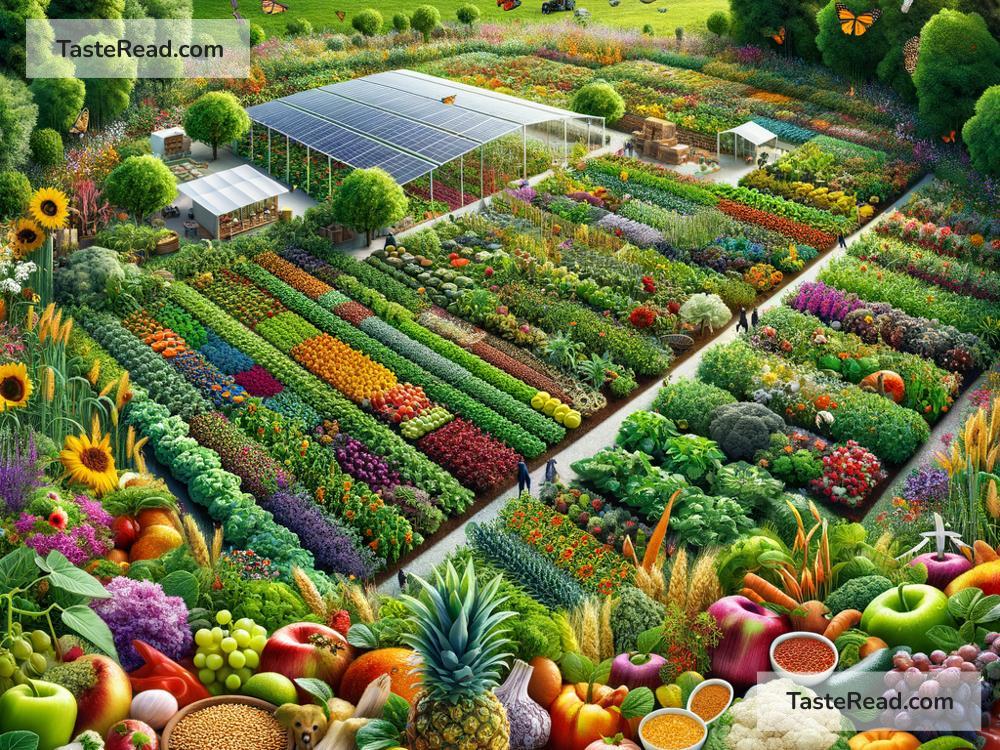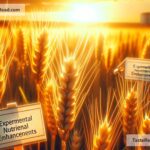The Future of Biodiversity in Agriculture: Why It Matters and What’s Next
Agriculture has always been a cornerstone of human survival. It feeds us, supports economies, and creates jobs. But as the world’s population grows and climate change affects land, water, and weather, agriculture needs to adapt. One of the key solutions lies in biodiversity—the variety of life on Earth, from plants and animals to insects and microbes. Biodiversity in agriculture isn’t just a nice-to-have; it’s absolutely essential to the future of farming and food security.
Why Biodiversity Matters in Agriculture
Imagine a farm with only one crop, like wheat or corn, growing every year. Eventually, pests, diseases, or extreme weather could wipe out that crop, leaving the farmer with no harvest. This is where biodiversity can help. When farms grow multiple crops, raise a variety of animals, or encourage wildlife like bees and birds, they become more resilient. Biodiversity creates a natural balance, where pests are controlled, soil stays healthy, and plants grow better.
For example:
– Pollinators like bees and butterflies help plants produce fruits, vegetables, nuts, and seeds.
– Healthy soil microbes improve plant growth and retain water, reducing the impact of droughts.
– Different crops in rotation prevent soil depletion and stop diseases from spreading.
In short, biodiversity strengthens agriculture to withstand challenges, like changing climates and growing demand for food.
Challenges to Biodiversity in Agriculture
Despite its importance, biodiversity in agriculture is under threat. Over the past century, farming has become increasingly industrialized. Large-scale farms focus on a few high-yield crops, relying on chemical fertilizers and pesticides to maximize efficiency. This practice, known as monoculture farming, leads to biodiversity loss. Here’s how:
– Loss of habitat: Clearing forests and grasslands for large farms destroys natural habitats for animals and insects.
– Pesticides and herbicides: These chemicals kill not only harmful pests but also beneficial insects and plants.
– Climate change: Rising temperatures, shifting precipitation, and extreme weather affect ecosystems, disrupting the natural cycles that plants and animals rely on.
As biodiversity decreases, agriculture becomes more fragile, and humanity faces risks like less food availability, lower nutritional quality, and rising costs.
The Benefits of Biodiversity for Future Farming
To tackle these issues, the future of agriculture depends on embracing biodiversity rather than working against it. Farmers, scientists, and policymakers are already making efforts to promote practices that protect biodiversity. Let’s look at some of the advantages and opportunities that come with this shift:
-
Natural Pest Control
Farming systems with biodiversity often have fewer pest problems because beneficial organisms—like predatory insects or birds—keep pests in check. For example, ladybugs eat aphids that damage crops, reducing the need for synthetic pesticides. -
Climate Resilience
A diverse mix of crops and plants makes farms more adaptable to extreme weather. While one crop might fail during a drought, others may survive and provide income or food. Similarly, biodiverse soil retains water better and stores more carbon, helping farms cope with warming temperatures. -
Better Nutrition
When farms grow diverse crops, they provide greater variety in diets. For example, instead of growing just rice or wheat, a farm might add lentils, millet, spinach, or fruit trees to its fields—unlocking better nutrition for local communities. -
Economic Opportunities
Biodiversity-based farming opens pathways for farmers to explore new markets. Organic farming, agroforestry, and sustainable products often earn higher profits because consumers are increasingly concerned about the environment.
What the Future of Biodiversity in Agriculture Looks Like
If we want agriculture to thrive in the future, we need to take urgent steps to protect and promote biodiversity. Efforts are already underway, and they show promising results:
1. Agroecology
Agroecology combines traditional farming practices with modern science. It focuses on working with natural ecosystems rather than disrupting them. Farmers use techniques like crop rotation, intercropping, and planting cover crops to improve soil health and reduce reliance on fertilizers and pesticides.
2. Seed Banks
Seed banks protect genetic diversity. They store seeds from thousands of plant species, including native or rare crops, ensuring that if certain plants are lost due to disasters or diseases, we still have their genetic material to grow them again.
3. Precision Agriculture
Technology is transforming farming. Drones, sensors, and AI help farmers monitor their fields and use resources efficiently. This reduces waste and minimizes environmental damage, supporting biodiversity.
4. Support for Small Farms
Small-scale farms often sustain local biodiversity by growing diverse crops. Governments and organizations can help these farmers by providing resources, financial support, and education.
5. Consumer Awareness
The choices we make as consumers matter. By buying organic, sustainably produced food, we encourage farmers to adopt biodiversity-friendly practices. Eating more varied diets (including traditional or indigenous crops) also helps.
A Shared Responsibility
The future of biodiversity in agriculture depends on collaboration. Farmers, scientists, governments, and consumers must work together to protect natural ecosystems while meeting the world’s food needs. Every choice we make—whether it’s how we farm, which crops we grow, or what food we buy—can shape the way agriculture evolves.
We’re at a crossroads. By choosing to embrace biodiversity, we can create farms that are healthier, more resilient, and ready to face the challenges of the future. Not only will this ensure food security, but it will also safeguard the planet for generations to come.
Let’s invest in biodiversity now—because the health of our farms, ecosystems, and communities is interconnected. The future of agriculture depends on it!


